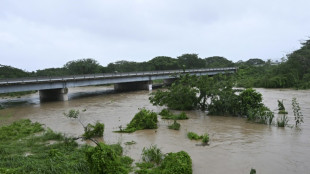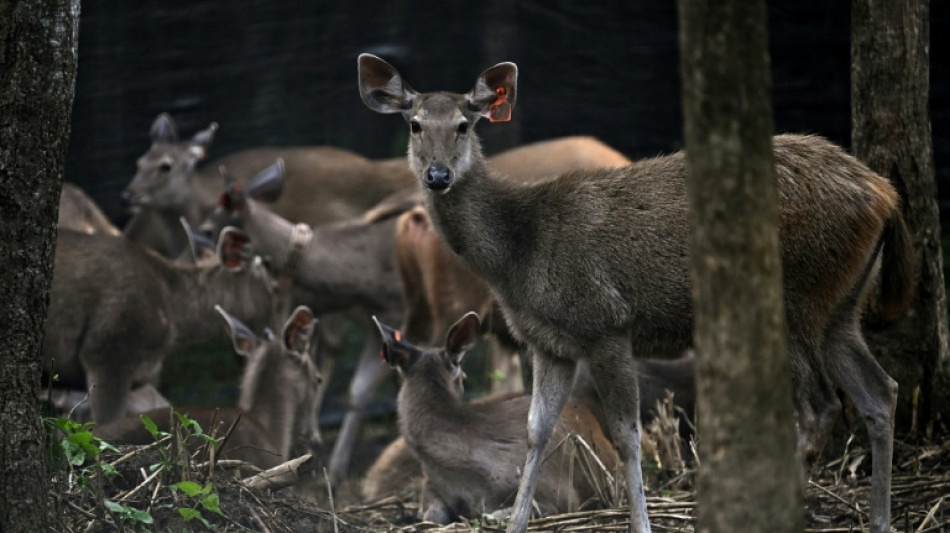
-
 EU seeks 'urgent solutions' with China over chipmaker Nexperia
EU seeks 'urgent solutions' with China over chipmaker Nexperia
-
Paris prosecutor promises update in Louvre heist probe

-
 Funds for climate adaptation 'lifeline' far off track: UN
Funds for climate adaptation 'lifeline' far off track: UN
-
Record Vietnam rains kill seven and flood 100,000 homes
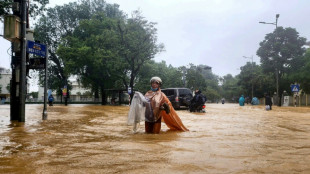
-
 Markets extend record run as trade dominates
Markets extend record run as trade dominates
-
Sudan govt accuses RSF of attacking mosques in El-Fasher takeover
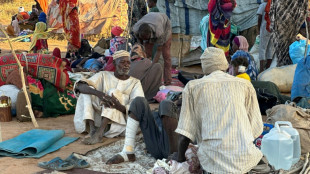
-
 Rain washes out 1st Australia-India T20 match
Rain washes out 1st Australia-India T20 match
-
Spain's Santander bank posts record profit

-
 FIA taken to court to block Ben Sulayem's uncontested candidacy
FIA taken to court to block Ben Sulayem's uncontested candidacy
-
Chemicals firm BASF urges EU to cut red tape as profit dips

-
 Romania says US will cut some troops in Europe
Romania says US will cut some troops in Europe
-
Israel hits dozens of targets as Gaza sees deadliest night since truce

-
 Mercedes-Benz reassures on Nexperia chips as profit plunges
Mercedes-Benz reassures on Nexperia chips as profit plunges
-
France tries Bulgarians over defacing memorial in Russia-linked case

-
 BBC says journalist questioned and blocked from leaving Vietnam
BBC says journalist questioned and blocked from leaving Vietnam
-
UK drugmaker GSK lifts 2025 guidance despite US tariffs

-
 Mercedes-Benz profit plunges on China slump and US tariffs
Mercedes-Benz profit plunges on China slump and US tariffs
-
South Korea gifts Trump replica of ancient golden crown

-
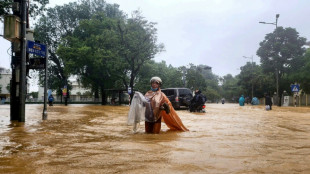 Record Vietnam rains kill four and flood 100,000 homes
Record Vietnam rains kill four and flood 100,000 homes
-
Norway's energy giant Equinor falls into loss

-
 Asia stocks join Wall Street records as tech bull run quickens
Asia stocks join Wall Street records as tech bull run quickens
-
New Zealand hammer reckless England despite Archer's brilliance

-
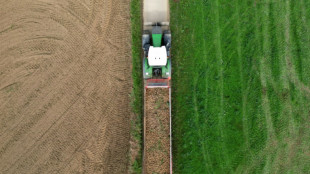 Record potato harvest is no boon in fries-mad Belgium
Record potato harvest is no boon in fries-mad Belgium
-
Deutsche Bank posts record profit on strong trading

-
 UBS beats expectations as claws backs provisions
UBS beats expectations as claws backs provisions
-
German neo-Nazi rappers push hate speech, disinfo on TikTok

-
 US aid flows to Nigeria anti-landmine efforts - for now
US aid flows to Nigeria anti-landmine efforts - for now
-
Low turnout as Tanzania votes without an opposition

-
 Monarch-loving Trump gifted golden crown once worn by South Korean kings
Monarch-loving Trump gifted golden crown once worn by South Korean kings
-
Dutch vote in test for Europe's far right

-
 Fugitive ex-PM says Bangladesh vote risks deepening divide
Fugitive ex-PM says Bangladesh vote risks deepening divide
-
On board the Cold War-style sealed train from Moscow to Kaliningrad

-
 Spain to hold memorial on first anniversary of deadly floods
Spain to hold memorial on first anniversary of deadly floods
-
Gaza's civil defence says at least 50 killed in Israeli strikes

-
 Trump said 'not allowed' to run for third term, 'too bad'
Trump said 'not allowed' to run for third term, 'too bad'
-
Unruffled by Trump, Chinese parents chase 'American dream' for kids

-
 Australian police design AI tool to decipher predators' Gen Z slang
Australian police design AI tool to decipher predators' Gen Z slang
-
Tanzania polls open with opposition excluded

-
 Reckless England set New Zealand 176 to win second ODI
Reckless England set New Zealand 176 to win second ODI
-
Tanzania votes but with opposition excluded

-
 Coach defends handing Australia captaincy back to Sam Kerr
Coach defends handing Australia captaincy back to Sam Kerr
-
Thunder, 76ers remain unbeaten with NBA comeback wins

-
 France expected to adopt consent-based rape law
France expected to adopt consent-based rape law
-
Blue Jays swat Dodgers 6-2, level World Series

-
 Trump says 'nothing' will jeopardise Gaza ceasefire after Israeli strikes
Trump says 'nothing' will jeopardise Gaza ceasefire after Israeli strikes
-
Australia's Cummins makes tentative bowling return

-
 Veni, vidi, whoopsie: Australian schools make Caesar exam blunder
Veni, vidi, whoopsie: Australian schools make Caesar exam blunder
-
With 100 days to go, Milan Winter Olympics chiefs 'can see finish line'

-
 Pakistan says peace talks with Afghanistan 'failed'
Pakistan says peace talks with Afghanistan 'failed'
-
NZ raids shipping insurer over alleged sanctions busting


Thailand credits prey releases for 'extraordinary' tiger recovery
In the thick, steamy forests of western Thailand, 20 skittish sambar deer dart from an enclosure into the undergrowth -- unaware they may find themselves in the jaws of one of the habitat's 200 or so endangered tigers.
The release is part of a project run by the government and conservation group WWF to provide tigers with prey to hunt and eat, which has helped the big cat make a remarkable recovery in Thailand.
The wild tiger population in Thailand's Western Forest Complex, near the border with Myanmar, has increased almost fivefold in the last 15 years from about 40 in 2007 to between 179 and 223 last year, according to the kingdom's Department of National Parks (DNP).
It is an uptick that WWF's Tigers Alive initiative leader Stuart Chapman calls "extraordinary", especially as no other country in Southeast Asia has seen tiger numbers pick up at all.
The DNP and the WWF have been breeding sambar, which are native to Thailand but classed as vulnerable, and releasing them as prey.
Now in its fifth year, the prey release is a "very good activity," says the DNP's Chaiya Danpho, as it addresses the ecosystem's lack of large ungulates for tigers to eat.
Worrapan Phumanee, a research manager for WWF Thailand, says that deer were previously scarce in the area, impacting the tiger population.
But "since starting the project, we've seen tigers become regular residents here and successfully breed," he says.
Cambodia, Laos and Vietnam have all lost their native populations of Indochinese tigers, while Myanmar is thought to have just 23 left in the wild, in large part due to poaching and wildlife trafficking.
Over the past century numbers worldwide have fallen from about 100,000 individuals to an estimated 5,500, according to the IUCN, which classifies tigers as endangered due to habitat loss and overhunting of the species and their natural prey.
But major tiger recoveries have been recorded in India and Nepal, where in recent years numbers of Bengal tigers have grown to 3,600 and 355 respectively thanks to conservation measures.
- 'Incredibly successful' -
In a forest clearing in Khlong Lan National Park, DNP staff open the gate of the sambar deer enclosure where 10 males and 10 females have been grazing.
The deer watch cautiously as one brave individual darts out, before the rest follow at speed and disappear into the trees.
Worrapan says prey release programmes -- now also happening in Cambodia and Malaysia -- are part of wider restoration efforts to "rebuild ecosystems" in Southeast Asia, where they have been adapted for local purposes from similar initiatives that have existed for years in Africa.
The breeding and releases also aim to solve the problem of the sambar deer's own population decline due to hunting, says Worrapan.
"The purpose of releasing deer is not solely to serve as tiger prey but also to restore the deer population," he says, adding that GPS collar-monitoring has allowed researchers to track their lives after release.
He says despite having only known captivity, the deer show a strong ability to adapt to outside threats.
"(They) don't simply wait passively. They try to evade predators and choose safe areas to thrive."
Chaiya says only a small number of the released deer end up as predator dinner, with most going on to reproduce.
The sambar deer and their offspring "play a role in the food chain within the ecosystem, serving as prey for predators," he says.
Y.Zaher--SF-PST

